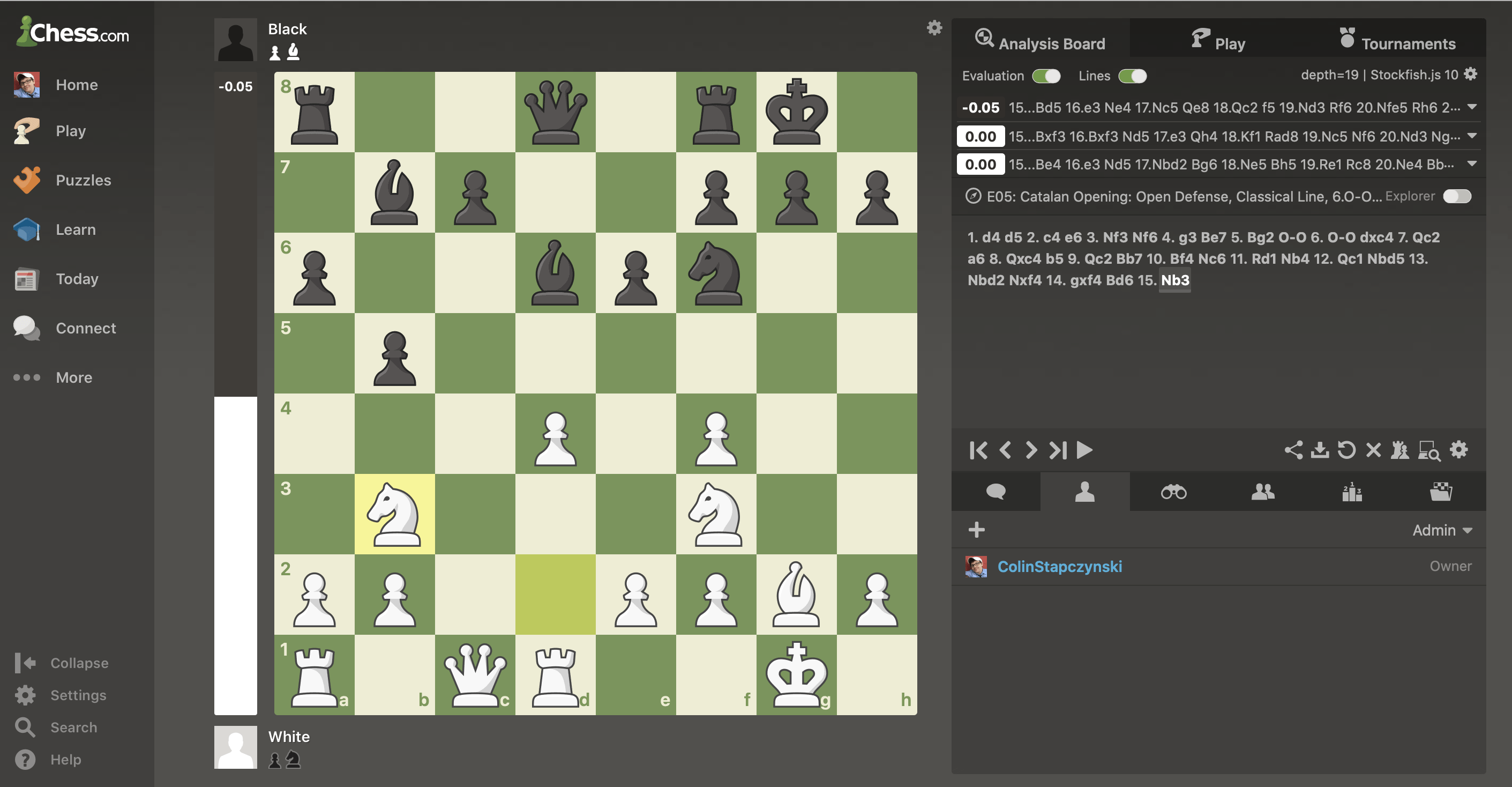

- USING STOCKFISH CHESS ENGINE HOW TO
- USING STOCKFISH CHESS ENGINE UPDATE
- USING STOCKFISH CHESS ENGINE DRIVER
- USING STOCKFISH CHESS ENGINE SOFTWARE
USING STOCKFISH CHESS ENGINE SOFTWARE
On the software side of things, the Pi is running the mature Stockfish open source chess engine. The Pi Zero itself connects to the board by way of the GPIO header, and is mechanically supported by the standoffs used to hold the device together.

USING STOCKFISH CHESS ENGINE DRIVER
All of the electronics are housed on the center custom PCB which features a HT16K33 driver for the dual LTP-3784E “starburst” LED displays, a MCP1642B voltage regulator, 16 T元305 tactile switches for the keyboard, and a MCP73871 battery management chip for the 3.7 volt lithium-ion battery that powers the whole show. The pocket sized chess computer uses a “sandwich” style construction which shows off the internals while still keeping things reasonably protected. We can’t guarantee though that a few boards might not get flipped over in frustration. With the Chess Challenger and a standard board, the player can face off in an epic battle of wits against the computer without risk of developing carpal tunnel. Modeled after a commercial gadget of the same name from 1978, his retro-themed open hardware design utilizes the Raspberry Pi Zero and modern chess software to bring the vintage concept into the 21st century. Of course, the tricky part is explaining the whole corporeal thing to a piece of software on your computer.Įnter the “Chess Challenger” by. That might be accurate for the folks who dabble in the occasional match during their break, but for the real chess aficionados nothing beats playing on a real board with real pieces. Here is the tutorial to schedule the stopping of an EC2 instance that I used.If you imagine somebody playing chess against the computer, you’ll likely be visualizing them staring at their monitor in deep thought, mouse in hand, ready to drag their digital pawn into play. I set up an AWS Lambda function that automatically shuts down the instance every night at midnight, just to be safe. Since you pay by the minute, if you forget to shut it down you will continue to pay for the running server. One risk with this approach is forgetting to stop the instance when you are done with it. Now getting the instance running and SSHEngine configured only takes a few seconds, less time than it takes for Chessbase to startup. The script is written in python and can be found here:
USING STOCKFISH CHESS ENGINE UPDATE
USING STOCKFISH CHESS ENGINE HOW TO
In this post I’ll talk about how to actually connect and use that engine. In my previous post about setting up an on-demand cloud-based chess engine, I gave my ideas about how to get this remote server up and running.


 0 kommentar(er)
0 kommentar(er)
